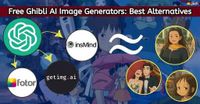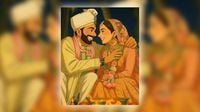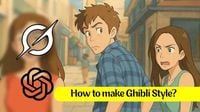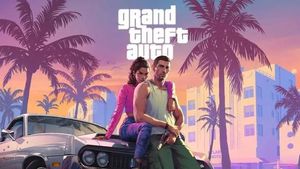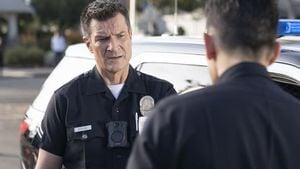Studio Ghibli’s art style has taken the internet by storm, inspiring fans worldwide to recreate their favorite scenes or transform personal photos into dreamy, hand-drawn-style illustrations. The recent trend has gained momentum following the introduction of native image generation capabilities in OpenAI's latest AI model, GPT-4o. However, this feature is currently limited to paid subscribers of ChatGPT Plus, leaving many free users eager to join the viral phenomenon.
In response to this demand, xAI's Grok 3 chatbot has emerged as a popular alternative, allowing users to create Ghibli-style images without any subscription fee. Accessible through X (formerly Twitter), Grok 3 provides a user-friendly option for those looking to generate anime-style artwork. As more people experiment with this feature, interest in AI-driven image transformation is rapidly growing.
The Ghibli-style image trend began gaining traction when OpenAI enabled image generation and editing capabilities in ChatGPT-4o. Users quickly realized they could create illustrations with a distinctive hand-drawn aesthetic, reminiscent of Studio Ghibli’s iconic animated films. Social media platforms have become flooded with AI-generated Ghibli-inspired images, with users sharing whimsical versions of themselves, pets, and landscapes. Even OpenAI CEO Sam Altman joined the trend by changing his profile picture on X to a Ghibli-style AI illustration.
Studio Ghibli, founded in 1985 by legendary filmmakers Hayao Miyazaki, Isao Takahata, and Toshio Suzuki, is renowned for its high-quality hand-drawn animation, deep storytelling, and imaginative worlds. Some of the studio’s most famous films include My Neighbor Totoro (1988), Spirited Away (2001), Howl’s Moving Castle (2004), Princess Mononoke (1997), and Kiki’s Delivery Service (1989). Ghibli's animation is characterized by soft colors, dreamy landscapes, and detailed hand-drawn illustrations, making it a natural inspiration for AI-generated art.
For those looking to generate Studio Ghibli-style images using Grok 3, the process is straightforward. Users can open the Grok app or website, select Grok 3 as the active model, and upload their desired photo. After typing a request such as "Transform this image into a Studio Ghibli-style illustration," Grok will process the request and return the stylized image. If the result is unsatisfactory, users can modify and refine the image using Grok’s built-in editing tools.
The interest in Ghibli-style images has surged, with Google Trends data from March 28-29 showing a sharp spike in searches related to "Ghibli AI images" in India and other regions. This indicates that the trend is spreading rapidly across various online communities. As AI image-generation tools become more accessible, the popularity of transforming everyday photos into artistic and nostalgic visuals is likely to continue growing. Grok 3’s free accessibility and ease of use position it as a powerful tool for those eager to join the movement without a premium subscription.
To create Ghibli-style images using AI, several free tools and websites are available besides ChatGPT and Grok. These include Fotor, Getimg.ai, insMind, Hugging Face, MidJourney, DALL·E 3, Leonardo.AI, Runway ML, and Stable Diffusion. Each platform offers unique features that allow users to generate Ghibli-inspired artwork effortlessly.
For instance, Fotor enables users to transform their images into Studio Ghibli-style artwork by simply uploading a photo and selecting their desired style. Getimg.ai supports both text-to-image and image-to-image features, allowing users to describe scenes or upload images for transformation into Ghibli-inspired artwork. InsMind specializes in capturing the essence of Ghibli’s whimsical and dreamy aesthetic, producing visuals with vibrant colors and soft lighting.
MidJourney is another powerful AI image generator known for replicating complex artistic styles, including Studio Ghibli’s whimsical aesthetic. Users can create Ghibli-inspired images by entering detailed prompts that describe characters, settings, and moods. Meanwhile, DALL·E 3, developed by OpenAI, supports Ghibli-style image generation through its advanced text-to-image capabilities, allowing users to input detailed descriptions for artwork that mirrors Miyazaki’s signature charm.
For those eager to dive into the Ghibli-style trend, here are ten prompts to generate Ghibli-style images on ChatGPT: "Transform this photo into Studio Ghibli animation style with vibrant colors, soft lighting, and the characteristic whimsical feel of Miyazaki films," or "Make this image Ghibli style with pastel colors and a magical atmosphere." These prompts help guide the AI in capturing the essence of Studio Ghibli's unique style, which includes vibrant colors, whimsical details, and a magical atmosphere.
As the Ghibli-style trend continues to captivate audiences, it raises questions about the intersection of technology and creativity. While some view AI-generated art as a fun experiment, others express concerns about its implications for human creativity. Regardless of the debate, the rising popularity of Ghibli-style images showcases the potential of AI to inspire new forms of artistic expression.
In a world where technology and creativity are increasingly intertwined, the Ghibli-style image trend serves as a reminder of the enduring appeal of hand-drawn artistry and the magic of storytelling. As more users embrace these AI tools, the future of art may very well be a blend of traditional techniques and innovative technology, creating a new era of artistic exploration.

